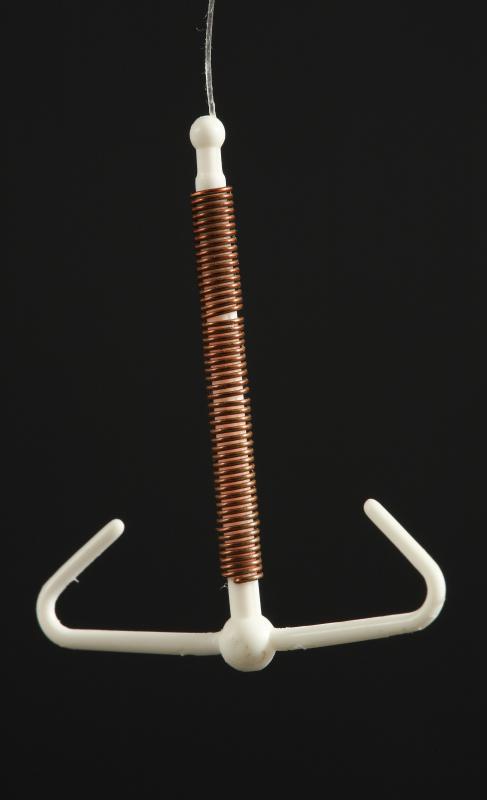At WiseGEEK, we're committed to delivering accurate, trustworthy information. Our expert-authored content is rigorously fact-checked and sourced from credible authorities. Discover how we uphold the highest standards in providing you with reliable knowledge.
What is a Non-Hormonal IUD?
A non-hormonal IUD, also known as a copper IUD, is a long-term form of birth control for women. It is relatively simple to insert, has minimal side effects, and is one of the most low maintenance forms of birth control available. While it is considered an effective means of preventing pregnancy, it does not protect against sexually transmitted diseases (STDs) or HIV/AIDS.
Unlike most means of birth control, a non-hormonal IUD relies on copper rather than artificial hormones to prevent pregnancy. Copper is naturally toxic to sperm and also causes the uterus and tubes to excrete a fluid that kills sperm. A non-hormonal IUD is shaped like a T, with copper wires wound around the stem, and a short string attached at the bottom.

This type of birth control is inserted by a doctor through the opening of the cervix into the uterus. The string at the bottom of the non-hormonal IUD is then cut, if necessary, so it is still long enough to check that the IUD is in place, but short enough to avoid hindering sexual activity. This process usually takes less than 10 minutes, and most women experience slight cramping and bleeding for a day or two after the procedure. Unlike some other forms of birth control, no back-up birth control method is needed following the insertion if a woman is in a monogamous relationship.

A month after the non-hormonal IUD is placed, most doctors do a follow-up exam to make sure it is still in the proper location. As long as it is, women are typically advised to check for the string after each menstrual cycle. It can remain in place and prevent pregnancy for up to 10 years. In some cases, the IUD can be a form of emergency contraception for women who have had unprotected sex without using another form of birth control, and who plan to use the IUD as birth control.

Research on the effectiveness of a non-hormonal IUD indicate that in the first year, six out of every 1,000 women become pregnant. Over a ten-year period, only 25 out of every 1,000 women experience pregnancy. A copper IUD can make a woman's monthly period longer, however, and, in some cases, increase cramping; this is estimated to occur in a little over 10% of women. There is also a slight risk of puncturing the uterus during insertion, and becoming pregnant on an IUD can increase the risk of an ectopic pregnancy.
Since the copper IUD does not contain hormones, fertility typically returns almost immediately after it is removed. Moreoever, a non-hormonal IUD does not protect against any STDs and should be used in conjunction with a condom if a woman is not in a monogamous relationship. Women who suspect they may be pregnant with the IUD in place should contact their doctor immediately to verify pregnancy and, if with child, have the IUD removed.
AS FEATURED ON:
AS FEATURED ON:













Discuss this Article
Post your comments